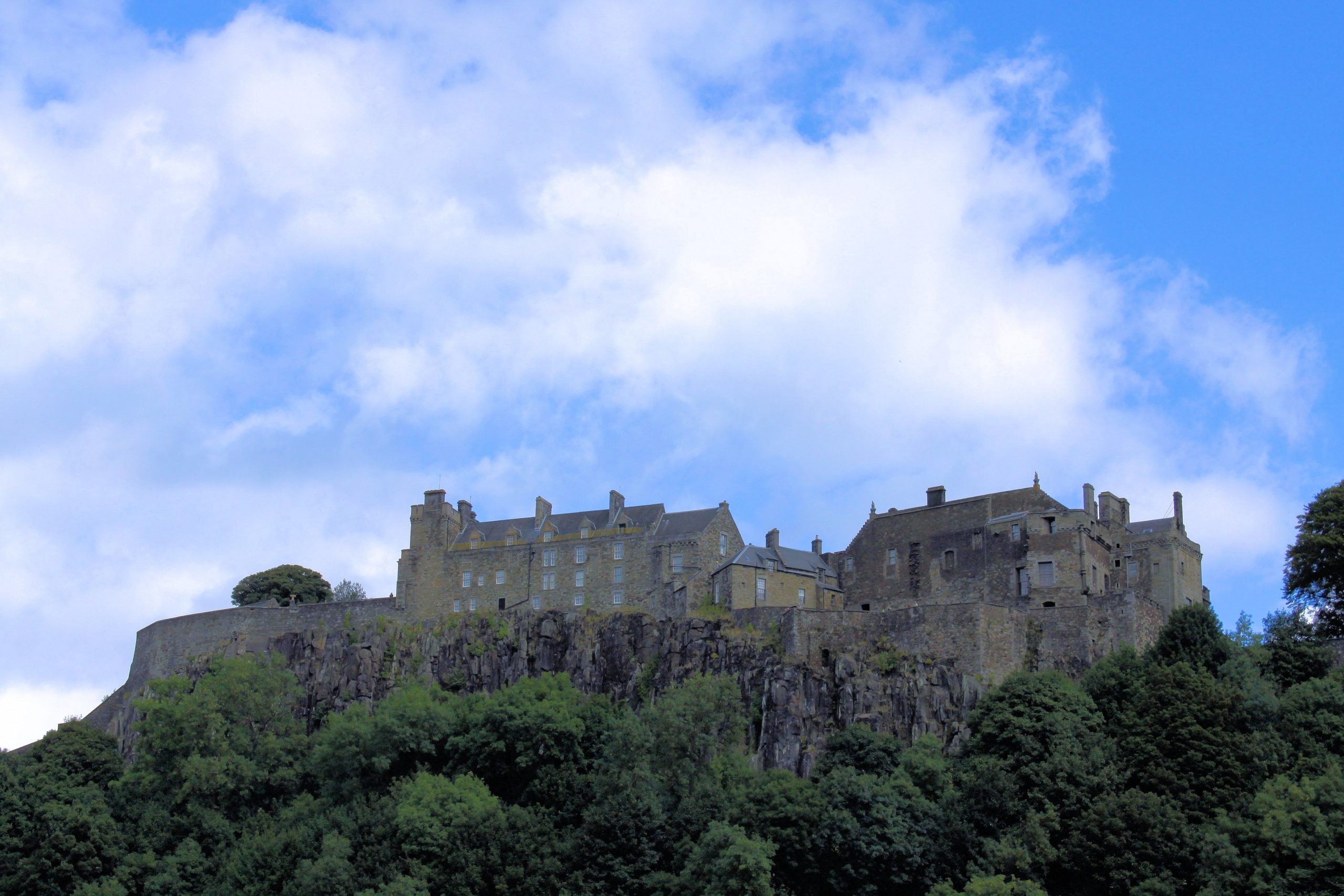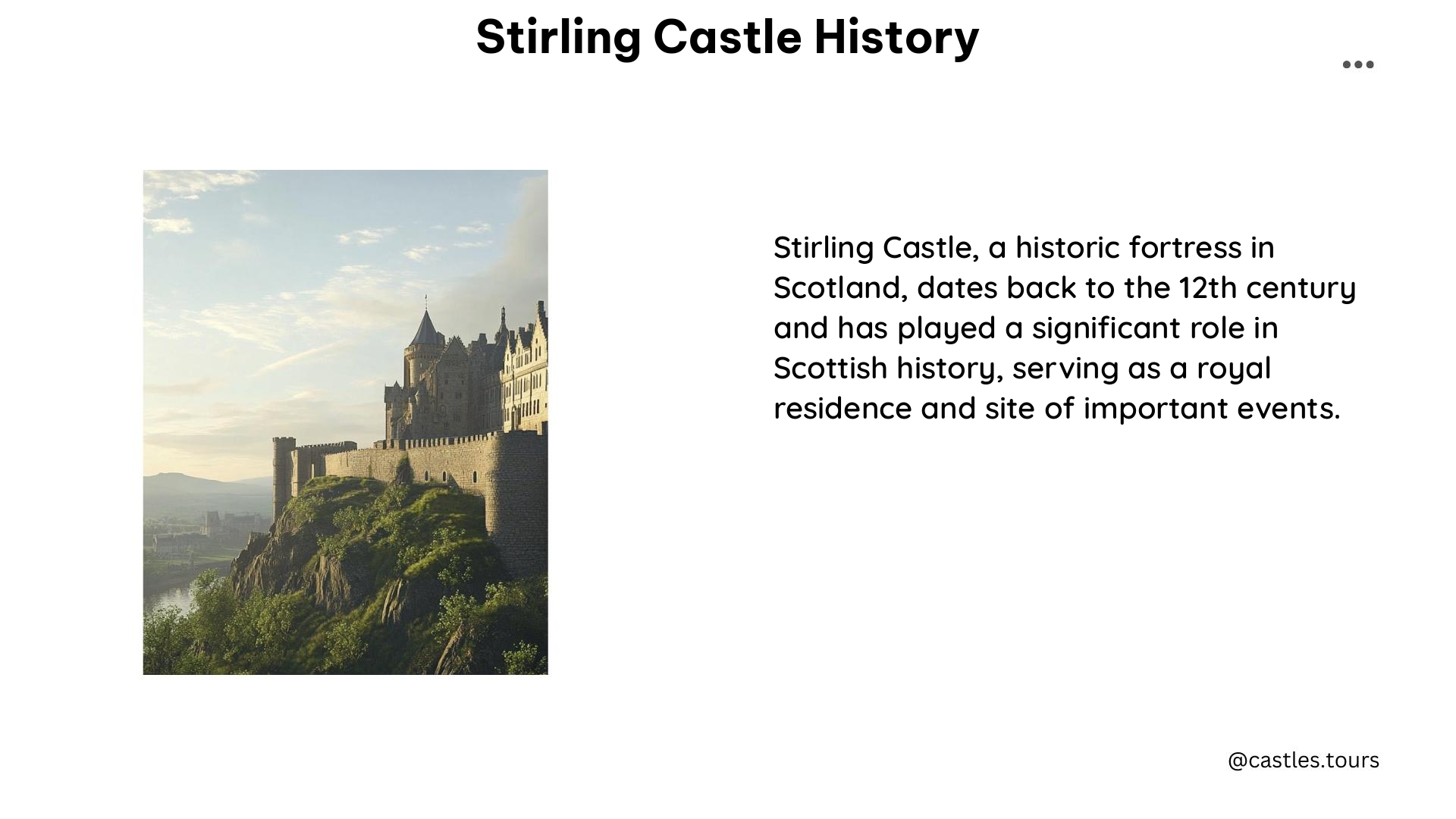Stirling Castle, a majestic fortress perched atop a volcanic crag, has been a witness to some of the most pivotal moments in Scottish history. From its earliest mention in the 12th century to its role in the Wars of Scottish Independence and the reigns of influential monarchs, this castle has stood as a symbol of Scotland’s resilience and cultural heritage.
The Early History of Stirling Castle (12th-15th centuries)

Stirling Castle’s history can be traced back to around 1110, when King Alexander I dedicated a chapel within its walls. Over the following centuries, the castle became an established royal center, with King Alexander I dying there in 1124. During the reign of David I, Stirling became a royal burgh, and the castle an important administrative hub.
The castle played a crucial role in the Wars of Scottish Independence, changing hands frequently between the Scots and the English. In 1297, William Wallace’s victory at Stirling Bridge marked a significant turning point in the conflict, while Robert the Bruce’s defeat of Edward II at Bannockburn in 1314 further cemented Scotland’s independence.
The Late Medieval Period (15th-16th centuries)

Stirling Castle underwent significant renovations during the reigns of James IV and James V. James IV built the impressive Great Hall around 1500, while James V added the Royal Palace in the 1540s, which was designed in the French Renaissance style. This period also saw the castle’s association with Mary Queen of Scots, who was crowned there in 1543 and spent part of her childhood within its walls. Her son, James VI, was later baptized in the Chapel Royal in 1594.
The Early Modern Period (17th-18th centuries)
During the 17th and 18th centuries, Stirling Castle continued to play a significant role in Scottish history. James VI rebuilt the Chapel Royal in 1594, which was one of the first Protestant churches in Scotland. The castle was also besieged several times, including in 1584 by rebels against James VI and in 1746 by Bonnie Prince Charlie, who was unsuccessful in his attempt to take the castle.
Restoration and Tourism
In the late 20th and early 21st centuries, Stirling Castle underwent extensive restoration, including the refurbishment of the Royal Palace and the Chapel Royal. Today, the castle is a popular tourist attraction managed by Historic Environment Scotland, offering guided tours, audio guides, and digital British Sign Language tours for visitors to explore its rich history and architectural wonders.
Key Events and Figures in Stirling Castle’s History
| Event | Year |
|---|---|
| First Mention of Stirling Castle | Around 1110 |
| William Wallace’s Victory at Stirling Bridge | 1297 |
| Robert the Bruce’s Victory at Bannockburn | 1314 |
| Mary Queen of Scots’ Coronation | 1543 |
| James VI’s Baptism in the Chapel Royal | 1594 |
| Bonnie Prince Charlie’s Unsuccessful Siege | 1746 |
| Key Figures |
|---|
| William Wallace |
| Robert the Bruce |
| Mary Queen of Scots |
| James IV |
| James V |
| James VI |
| Bonnie Prince Charlie |
Practical Information
- Opening Hours: 9:30 am to 6:00 pm (April to September), 9:30 am to 5:00 pm (October to March)
- Ticket Prices: Vary depending on the time of year and visitor type; check the Historic Environment Scotland website for details
- Guided Tours: Available every half hour between 10:00 am and 3:00 pm, starting at the well outside the Fort Major’s House
Stirling Castle’s rich history and architectural grandeur make it a must-visit destination for anyone interested in exploring Scotland’s past. From its role in the Wars of Scottish Independence to its association with influential monarchs, this castle continues to captivate visitors from around the world.
References:
– https://www.historicenvironment.scot/visit-a-place/places/stirling-castle/
– https://www.historicenvironment.scot/visit-a-place/places/stirling-castle/history/
– https://www.worldhistory.org/Stirling_Castle/
– https://www.britannica.com/topic/Stirling-Castle
– https://en.wikipedia.org/wiki/Stirling_Castle
